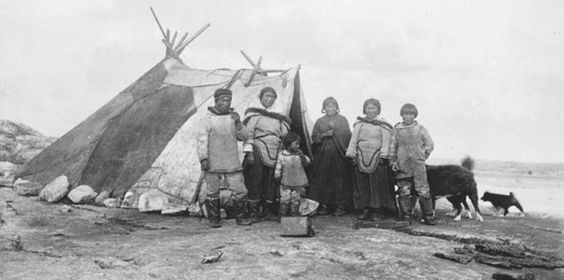 It is considered hard for people who have only experienced a sedentary lifestyle to understand what a nomadic lifestyle truly means. Yet the circumstances in which I am writing, a national lockdown with people urged to stay at home, has quickly exposed how much travel our sedentary lives actually contain.
It is considered hard for people who have only experienced a sedentary lifestyle to understand what a nomadic lifestyle truly means. Yet the circumstances in which I am writing, a national lockdown with people urged to stay at home, has quickly exposed how much travel our sedentary lives actually contain.
This probably indicates that our views on what is “settled” and “transitory” are very much social values rather than true descriptions of behaviour. Having a fixed abode represents security (an Englishman’s castle…) whereas travel represents uncertainty and risk.
This gives a misleading view of our ancestors. I remember being told in school of their hard lives that were short and ended abruptly. The reality is far from it. Studies of people living a nomadic lifestyle in the arctic regions show that there is a lot of stability in people’s lives and that this largely comes from the very human concept of home.
There are so many sayings about home and they are so familiar that I shall not waste words repeating them. But they all emphasise the importance of the concept and articulate the way it underpins a lot of our social activities.
So how does this relate to the Palaeolithic peoples in Lincolnshire? In simple terms, Lincolnshire was their home (or at least part of it). That home would have been divided into separate spaces just as our homes are; a place to sleep, and place to prepare food, a place to eat and a place to socialise. The difference is that where we have these as physical rooms in a structure, our ancestors would have these places marked out over a large territory. To put it another way, the people of Palaeolithic Lincolnshire had very large open plan homes with numerous sleep, eating and recreational areas.
Just as the nature programmes on television tell us that groups of animals have a territory, social groups of humans would have had a territory. This was their home, and it had to provide them with all they needed.
Within this home, they would have needed shelter from the elements, and for this they would have made structures from whatever was available close by. Sadly, no such structures have yet been found in Lincolnshire, and very few have been found generally. To create some sort of mental image we speculate about tent-like structures covered in hides or turf, but we have no hard evidence to support these. The aim of the structure would be to provide a micro-environment that was dry and the air temperature was above freezing. The means of heating the structure therefore becomes important.
Discoveries of Palaeolithic artefacts across Europe have included a number of carved stone lamps. These were simple open bowls filled with rendered animal fat that fuelled a wick made from plant fibres. In cultures such as the Inuit, the lamp is more important than the structure. And this gives us another possible insight into the lives of our Palaeolithic people. Structures would be vacated and left empty, although not always abandoned (it is easy to refurbish an existing structure than to build a new one), but the lamp would stay with the social group. Could home have been where the lamp was?
Looking at Lincolnshire as just a few very large homes also helps to make senses of the relatively sparse distribution of finds from an era of several thousand years. Imagine the contents of your house were spread over an entire district, it would be hard for someone to make sense of your life from the belongings found in just one parish.
Taking all these factors into consideration, we are left with an image of our ancestors that is either so threadbare as to be unintelligible or requires a considerable amount of speculation.
For a moment, let us speculate. Let us imagine a group of Palaeolithic people living in the area of (just for sake of argument) Grantham. They have an area of landscape to call home that includes hills, valleys and is close to the wetlands of the Trent valley. There are plenty of different food sources and materials for making shelters. In the summer they may head towards the Trent to find fish and fowl. They may choose a place that is close to the habitual routes of migrating animals. They may even alternate between the two. With winter they may choose higher ground sheltered in the lee of a hill. These are “rooms” in their Lincolnshire house. The materials available are varied. By the river, thin branches and reeds may have formed their shelter, and the hillsides there is stone, turf and heather. At some places, they would have pits where they stored food. Close enough to the hunting that they could fill them easily, but not too far from where they would spend the winter. Landmarks would have been used to return to particular spots, the food pits, the best hunting sites, the place where they weathered the storms last winter. It is a nomadic life, but it is also more familiar to us that we would expect.
I have tried, in layman’s terms, to explain the way a nomadic social group would have a home. But what is a social group in the Palaeolithic? That is the topic of my next piece.
